
Home / Education /
IMATA's Accreditation Committee
Recommended Reading List and Criteria:
Each book or resource will be recommended based on the following four criteria. A book may receive recommendations based on one or more of these criteria, indicated after the book's title by the corresponding letter.
- T - Technical Accuracy - A 'T' indicates that the reviewers felt the resource described training in a technically accurate way. Technical accuracy is based on proven scientific principles, operant learning theory, classical learning theory, or peer-reviewed journals or texts.
- P - Practical Application - A 'P' indicates that the reviewers felt the resource described the accurate practical application of techniques to marine animal training. The resource either focused on marine animals, or a significant part of the text focused on marine animal applications.
- I - Indirect Application - An 'I' indicates that the reviewers felt the resource described the accurate practical application of techniques to subjects other than marine animals. The focus may have been people, dogs, horses, or other training situations that, while not directly marine animal related, were none-the-less accurate.
- A - Anecdotally Relevant - An 'A' indicates that the reviewers felt the resource offered worthwhile anecdotal information that trainers might find useful or helpful. While an "A" does not preclude one of the other designations, it does imply that large segments of the information did not fit into the other categories easily.
All of the books contained in this reading list are the personal views of the respective authors and do not necessarily represent the views of IMATA or its Board of Directors.
ANIMAL AND BEHAVIOR INFORMATION (rated)
 |
Alexander, Melissa C. (2003). Click for Joy! Questions and Answers from Clicker Trainers and their Dogs. Sunshine Books, Inc., Waltham, MA. Taken from questions on an Internet list serve, the author has researched operantly accurate answers to the most common questions about dog training. This is written in an easy to understand style and is technically very accurate. (T, I, A) BUY ON-LINE |
 |
Burch, Mary R. & Bailey, Jon S. (1999). How Dogs Learn. Howell Book House, New York, NY. A thorough look at dog training from a scientific perspective. Accurate, yet easy to read, for the serious student and trainer. (T, I) BUY ON-LINE |
 |
Chance, Paul. (1999). Learning and Behavior. Fourth Edition. Brooks/Cole Publishing Co., Pacific Grove, CA. A well-respected textbook about the principles of learning. (T) BUY ON-LINE |
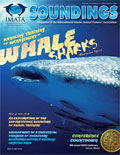 |
IMATA. (1975 - Present). SOUNDINGS. IMATA's quarterly magazine features articles about training and other animal care issues. (T, P, I, A) |
 |
Kazdin, Alan E. (1994). Behavior Modification in Applied Settings. Fifth Edition. Brooks/Cole Publishing Co., Pacific Grove, CA A well-respected textbook about the principles of behavior modification. (T, I) BUY ON-LINE |
 |
Minteer, Ben, Maienschein, Jane, and Collins, James. (2018). The Ark and Beyond: The Evolution of Zoo and Aquarium Conservation.
|
 |
Pryor, Karen. (1975). Lads Before the Wind. Harper & Row, New York, NY. A story of the development of Sea Life Park in Hawaii with a focus on the start of a training program. (P, A) BUY ON-LINE |
 |
Pryor, Karen. (1999). Don't Shoot the Dog. Second Edition. Bantam Books, New York, NY. Explores solving behavioral problems through operant conditioning techniques. (T, I, A) BUY ON-LINE |
 |
Ramirez, Ken. (1999). Animal Training: Successful Animal Management through Positive Reinforcement. Shedd Aquarium Press, Chicago, IL. Step-by-step approach to applying operant conditioning in a zoological setting. (T, P, I) BUY ON-LINE |
|
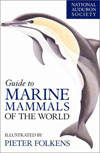 |
Reeves, R., Stewart, B. S., Clapham, P. J., & Powell, J. A. (2002). National Audubon Society Guide to Marine Mammals of the World. New York: Chanticleer Press, Inc. Describes in fascinating detail all 120 species of the world's whales, dolphins, porpoises, seals and sea lions, manatees, marine and sea otters, and the polar bear. Written by a team of experts and featuring more than 320 illustrations, 418 photographs, and 123 maps, this new guide offers more authoritative, up-to-date, and accessible information than any book previously published on the subject. (P, A) BUY ON-LINE |
|
 |
Reynolds, J. E., Wells, R. S., & Eide, S. D. (2000). The Bottlenose Dolphin: Biology and Conservation. Gainesville: University Press of Florida. Aimed at students, academics, and general readers, this work provides an introduction and overview to the biology and conservation of the bottlenose dolphin. It reviews the historical myths and legends of the dolphin, before going on to discuss contemporary human attitudes and interactions. (P, A) BUY ON-LINE |
|
 |
Ridgway, S. & Harrison, R. (Eds.). (1998). Handbook of Marine Mammals: The Second Book of Dolphins and Porpoises, Vol. 6. San Diego: Academic Press. Each chapter in this volume is written by a specialist author with extensive personal research experience of the species and provides a description of the species, and includes sections on the aspects of distribution and abundance, anatomy, physiology, behavior, reproduction, parasites and diseases and the impact of human activity on the animal's population and well being. Numerous maps, photos and drawings illustrate the text. (A) BUY ON-LINE |
|
 |
Riedman, M. (1991) The Pinnipeds: Seals, Sea Lions and Walruses. Berkeley: University of California Press. Discusses the adaptation, evolution, classification, distribution, ecology, behavior, communication, and learning of seals, sea lions, and walruses. (P, A) BUY ON-LINE |
 |
Skinner, B.F. (1938). The Behavior of Organisms: An Experimental Analysis. The Century Psychology Series, Appleton-Century-Crofts, New York, NY. Groundbreaking original work by the "father of operant conditioning." (T, I) BUY ON-LINE |
|
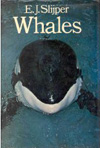 |
Slijper, E. J. (1979). Whales. New York: Cornell University Press. An oldie, but goodie. Slijper was a Dutch anatomist who devoted his life to the study of whales. Here he tells the whole remarkable story of whales: their history, incredible physiology, speed of navigation, mating procedures, temperament, behavior, and much, much more. (P, A) BUY ON-LINE |
|
 |
Stafford, G., Hanna, J., DeWitt, D., Nguyen, K., & Bennett, G. (2007). Zoomility: Keeper Tales of Training with Positive Reinforcement. iReinforce.com. What do elephants, killer whales and your family dog all have in common? Training with Zoomility! (T, P, I, A) BUY ON-LINE |
 |
Wilkes, Gary. (1995). A Behavior Sampler. Sunshine Books, Inc., North Bend, WA. Collection of short pet columns about dogs and cats. (T, I, A) BUY ON-LINE |
 |
Wood, Shelley. (2006). ABC of Animal Training. ABC Training Systems, Cancun, Mexico. Unlock the power of positive reinforcement with this comprehensive, entertaining and easy-to-understand video guide for training animals using Operant Conditioning techniques. (T, P, I, A) BUY ON-LINE |
ANIMAL AND BEHAVIOR INFORMATION (not rated)
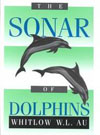 |
Au, Whitlow W. L. (1993). The Sonar of Dolphins. New York: Springer-Verlag Inc. The extraordinary ability of dolphins to echolocate has fascinated scientists and the public since its discovery in the late 1950s. This is the first book to summarize modern research on this subject, and it presents a broad synthesis of this very interdisciplinary subject. The author is an internationally recognized expert on dolphin sonar and is in a unique position to bring together research on the physiological, mathematical, and engineering aspects of dolphin sonar. BUY ON-LINE |
 |
Beland, P. (1996). Beluga: A Farewell to Whales. New York: Lyons & Burford. Belugas in the St. Lawrence River and why they are dying. BUY ON-LINE |
 |
Berta, A., Sumich, J. L., Folkens, P. A. (1999). Marine Mammals: Evolutionary Biology. San Diego: Academic Press. This book, by two leading marine mammalogists, is a succinct, yet comprehensive, text devoted to the systematics, evolution, morphology, ecology, physiology, and behavior of marine mammals. With chapters on the evolutionary history of the principle lineages, major organ systems, diving physiology, diet, sound production and echolocation, reproductive behavior, and conservation biology, this book will be required reading for all marine biologists concerned with marine mammals. BUY ON-LINE |
 |
Caldwell, D. K. & Caldwell, M. C. (1972). The World of the Bottlenosed Dolphin. Philadelphia: J. B. Pippincott Co. An early account of a fascinating view of dolphins as they go about the business of playing, fighting, breeding, and raising their young in a semi natural tank environment. BUY ON-LINE |
 |
Carwardine, M., & Camm, M. (1995). Whales, Dolphins and Porpoises. New York: Dorling Kindersley, Pub., Inc. Explores the physical characteristics, behavior, habitat, and feeding habits of these underwater mammals. BUY ON-LINE |
 |
Connor, R. C., & Peterson, D. M. (1994) The Lives of Whales and Dolphins. New York: Henry Holdt and Co. Annotated illustrations, descriptions, identification checklist, behavior, and sighting tips. BUY ON-LINE |
 |
Dierauf, L., & Gulland, F. M. D. (Eds.). (2001). CRC Handbook of Marine Mammal Medicine, (2nd ed.). Boca Raton: CRC Press. The only handbook specifically devoted to marine mammal medicine and health. With 66 contributors working together to craft 45 scientifically-based chapters, the text has been completely revised and updated to contain all the latest developments in this field. Building upon the solid foundation of the previous edition, the contents of this book are light-years ahead of the topics presented in the first edition. See what's new in the Second Edition: Marine mammals as sentinels of ocean health, emerging and resurging diseases, thorough revision of the immunology chapter, diagnostic imaging chapters to illustrate new techniques, quick reference for venipuncture sites in many marine mammals, unusual mortality events and mass strandings, new topics such as a chapter on careers, with a wider scope of coverage including species outside of the United States and Canada. Filled with captivating illustrations and photographs, the Handbook guides you through the natural history of cetaceans, pinnipeds, manatees, sea otters, and polar bears. Prepared in a convenient, easy-to-use format, it is designed specifically for use in the field. Covering more than 40 topics, this one-of-a-kind reference is packed with data. The comprehensive compilation of information includes medicine, surgery, pathology, physiology, husbandry, feeding, and housing, with special attention to strandings and rehabilitation. It is still a must for anyone interested in marine mammals. BUY ON-LINE |
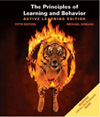 |
Domjan, M. P. (2002). Principles of Learning and Behavior. Belmont: Wadsworth Publishing. A systematic introduction to elementary forms of learning that have been the focus of research for much of the 20th century, this book covers habituation, classical conditioning, instrumental conditioning, stimulus control, aversive control, and their applications to the study of cognition and to the alleviation of behavior problems. Biological constraints on learning are integrated throughout the text, as are applications boxes that relate animal research to human learning and behavior. The book reflects the field of research it represents, in terms of topics covered, theories discussed, and experimental paradigms described. BUY ON-LINE |
 |
Herman, L. (Ed.). (1988). Cetacean Behavior: Mechanisms and Functions. Melbourne: Krieger Publishing Company. One aspect of an increasing environmental sensitivity is the proliferation of research on marine mammals, especially the cetaceans (whales, dolphins, and porpoises). This volume furnishes a broad review of research into cetacean behavior and behavioral mechanisms in a series of articles by experts in the field. Dolphins, the best-studied cetaceans, are covered in particular detail. BUY ON-LINE |
 |
Kastelein, R. A. Thomas J. A., & Nachtigall P. E. (Eds). (1995). Sensory Systems of Aquatic Mammals. Woerden: De Spil Publishers. A compilation of diverse information on the sensory abilities of marine mammals. BUY ON-LINE |
 |
King, J. E. (1964). Seals of the World. London: British Museum (Natural History). A natural history classic. BUY ON-LINE |
 |
Leatherwood, S. & Reeves, R. R. (1988). Whales, Dolphins, and Porpoises of the Eastern North Pacific and Adjacent Arctic Waters. Toronto: Dover Publications, Inc. Profusely illustrated guide for the layman covers physical description, common and scientific names, coloration, distinguishing features, distribution, and much more. Over 560 photographs of blue whales, humpbacks, killer whales, bottlenose dolphins, Dall's porpoise, and dozens of other species, make it easy to identify ocean-going mammals. BUY ON-LINE |
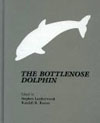 |
Leatherwood, S. & Reeves, R. (Ed.). (1989). The Bottlenose Dolphin. San Diego: Academic Press. Aimed at students, academics, and general readers, this work provides an introduction and overview to the biology and conservation of the bottlenose dolphin. It reviews the historical myths and legends of the dolphin, before going on to discuss contemporary human attitudes and interactions. BUY ON-LINE |
 |
Lorenz, K. (1974). On Aggression. New York: Harcourt, Brace & World. Hugely controversial on publication, this is an insightful and characteristically entertaining survey of animal behavior and the evolution of aggression throughout the animal world. BUY ON-LINE |
 |
Mann, J., Connor, R., Tyack, P., & Whitehead, H. (Eds.). (2000). Cetacean Societies. Chicago: The University of Chicago Press Ltd. Written by some of the world's leading cetacean scientists, this landmark volume will benefit not just students of cetology, but also researchers in other areas of behavioral and conservation ecology, as well as anyone with a serious interest in the world of whales and dolphins. Groups of chapters focus on the history of cetacean behavioral research and methodology; state-of-the-art reviews of information on four of the most-studied species: bottlenose dolphins, killer whales, sperm whales, and humpback whales; and summaries of major topics, including group living, male and female reproductive strategies, communication, and conservation drawn from comparative research on a wide range of species. BUY ON-LINE |
 |
Mead, J., Gold, J.P. (2002) Whales and Dolphins in Question. Washington: Smithsonian Institution Press. This book begins by defining the differences between, and similarities among, whales, dolphins, and related mammals. It goes on to discuss their behavior, evolution, geographic distribution, population sizes, anatomy, physiology, reproduction, behavior, and how humans relate to whales. The book is lavishly illustrated with about 100 color photographs of whales and dolphins in the wild, all by famed whale photographer Flip Nicklin. BUY ON-LINE |
 |
Norris,K. S. (Ed.). (1966). Whales, Dolphins and Porpoises. Berkeley: University of California Press. This book, a representative cross section of the science of cetology, is the result of a unique meeting of physical scientists and biologists whose research into a wide variety of scientific disciplines, including systematics, fisheries management, zoogeography, natural history, anatomy, physiology, hydrodynamics, acoustics, linguistics, and behavior brought them to share a common interest in the study of cetology. BUY ON-LINE |
 |
Norris, K. S. (1974). The Porpoise Watcher. New York: W.W. Norton and Co. An excellent account of a naturalist's experiences with porpoises and whales. BUY ON-LINE |
 |
Norris, K. S. (1991). Dolphin Days. The Life and Times of the Spinner Dolphin. New York: W.W. Norton & Co. Personal experiences with spinner dolphins off Hawaii. BUY ON-LINE |
 |
Nuzzolo, D. (2003). Dolphin Discovery: Bottlenose Dolphin Training and Interaction. Sea World Education Series. San Diego: Sea World Press. BUY ON-LINE |
 |
Perrin, W. F., Wursig, B. & Thewissen, J. G. M. (2002). Encyclopedia of Marine Mammals. San Diego: Academic Press. Combining excellent science with accessible style, this book is an indispensable resource on the fascinating warm-blooded creatures of the sea. The contributions of more than 200 leading international authorities have made this single volume the guide for studying the entire range of marine mammals. It is organized alphabetically with more than 280 articles devoted to a wide range of topics, from the specific behavior and physiology of cetaceans and pinnipeds, to ecology, population biology, human effects and interaction, and research methodology. BUY ON-LINE |
 |
Pryor, K., & Norris, K. (Eds.). (1998) Dolphin Societies: Discoveries and Puzzles. Berkeley: University of California Press. In this unusual book, two of the best-known scientists in the marine-mammal field have assembled an astonishing variety of discoveries about dolphins. The contributions range from a graduate student's first paper to senior scientists summarizing a lifetime of research. The dolphins they have studied range from tiny spinners to majestic pilot whales, from killer whales to the familiar bottlenose dolphin. The research tactics vary just as widely: the researchers have followed dolphins in boats, tracked them from shore, dived among hundreds of them (plus a few sharks) in tuna fishing nets. They have used computers and airplanes, genetic analysis, and artificial language, and learned to read the life history of a dolphin from the cross-section of a single tooth. Pryor and Norris are successful writers as well as scientists; the book is peppered with entertaining essays, by one or both editors, on the intriguing history of dolphin research. This book not only surveys the most interesting recent research on dolphin behavior but also gives lay readers a fascinating look at the scientific mind at work. BUY ON-LINE |
 |
Reynolds, G. S. (1975). A Primer of Operant Conditioning, revised. Glenview: Scott, Foresman, and Company. BUY ON-LINE |
 |
Reynolds, J. E., & Rommel, S. A. (Eds.). (1999). Biology of Marine Mammals. Washington: Smithsonian Institution Press. Taking an integrated approach to the biology of marine carnivores, cetaceans, and sirenians, 22 prominent researchers compare marine mammals with one another and with terrestrial mammals, providing a framework for fundamental biological and ecological concepts. They describe functional morphology, sensory systems, energetics, reproduction, communication and cognition, behavior, distribution, population biology, and feeding ecology. They also detail the physiological adaptations for such activities and processes as diving, thermoregulation, osmoregulation, and orientation, which enable marine mammals to exploit their aquatic environment. The book also includes information on marine toxicants and their possible effects on marine mammals. Scientific advances in the study of marine mammals such as whales, seals, manatees, otters, polar bears, and dolphins have increased exponentially in recent decades, yet few books have fully surveyed the biology of this group. As an introduction for students, a reference for professionals in related fields, and a comprehensive resource for marine mammals biologists and managers, Biology of Marine Mammals provides a wealth of information that can be broadly applied. BUY ON-LINE |
 |
Reynolds, J. E., Odel, D. K. (1991) Manatees and Dugongs. Facts on File, Incorporated. Aimed at the general reader and accompanied by superb photographs, this volume fully documents the natural history of Sirenia, the order of aquatic mammals that includes manatees of the Caribbean, Africa, and the Amazon, as well as the Indo-Pacific dugong. BUY ON-LINE |
 |
Ridgway, S. & Harrison, R. (Eds.). (1994). Handbook of Marine Mammals: The First Book of Dolphins and Porpoises, Vol. 5. London: Academic Press. Each chapter in this volume is written by a specialist author with extensive personal research experience of the species and provides a description of the species, and includes sections on the aspects of distribution and abundance, anatomy, physiology, behavior, reproduction, parasites, and diseases, and the impact of human activity on the animal's population and well being. Numerous maps, photos, and drawings illustrate the text. BUY ON-LINE |
CAREER INFORMATION (rated)
 |
Samansky, T. (2002). Starting Your Career as a Marine Mammal Trainer. Starting Your Career as a Marine Mammal Trainer. Independent Publishers Group. This career guide contains over 140 pages of insightful information and inside tips, which should prove invaluable to anyone interested in this profession. Emphasis is placed on answering the questions most often asked by students (and others) who want to know what it's really like to be a marine mammal trainer and how someone gets started in such a career. (T, P, A) BUY ON-LINE |
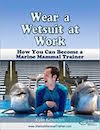 |
Kittleson, K. (2014). Wear a wetsuit to work: How you can become a marine mammal trainer. "Wear a Wetsuit at Work: How You Can Become a Marine Mammal Trainer" was created for those aspiring to enter the competitive field of marine mammal training. Lots of people want to be dolphin trainers, but not a lot of people know how to become a dolphin trainer. This book explains what you need to do in order to become a dolphin trainer or any other type of marine mammal trainer. (A) BUY ON-LINE |
CAREER INFORMATION (not rated)
 |
Glen, T.B., & Perkin, C. (1997). Dolphin and Whale Career Guide. London: Omega Publishing. Contains information on volunteering opportunities, career realities, some of the animal training schools, and a good compilation of facilities. BUY ON-LINE |
















